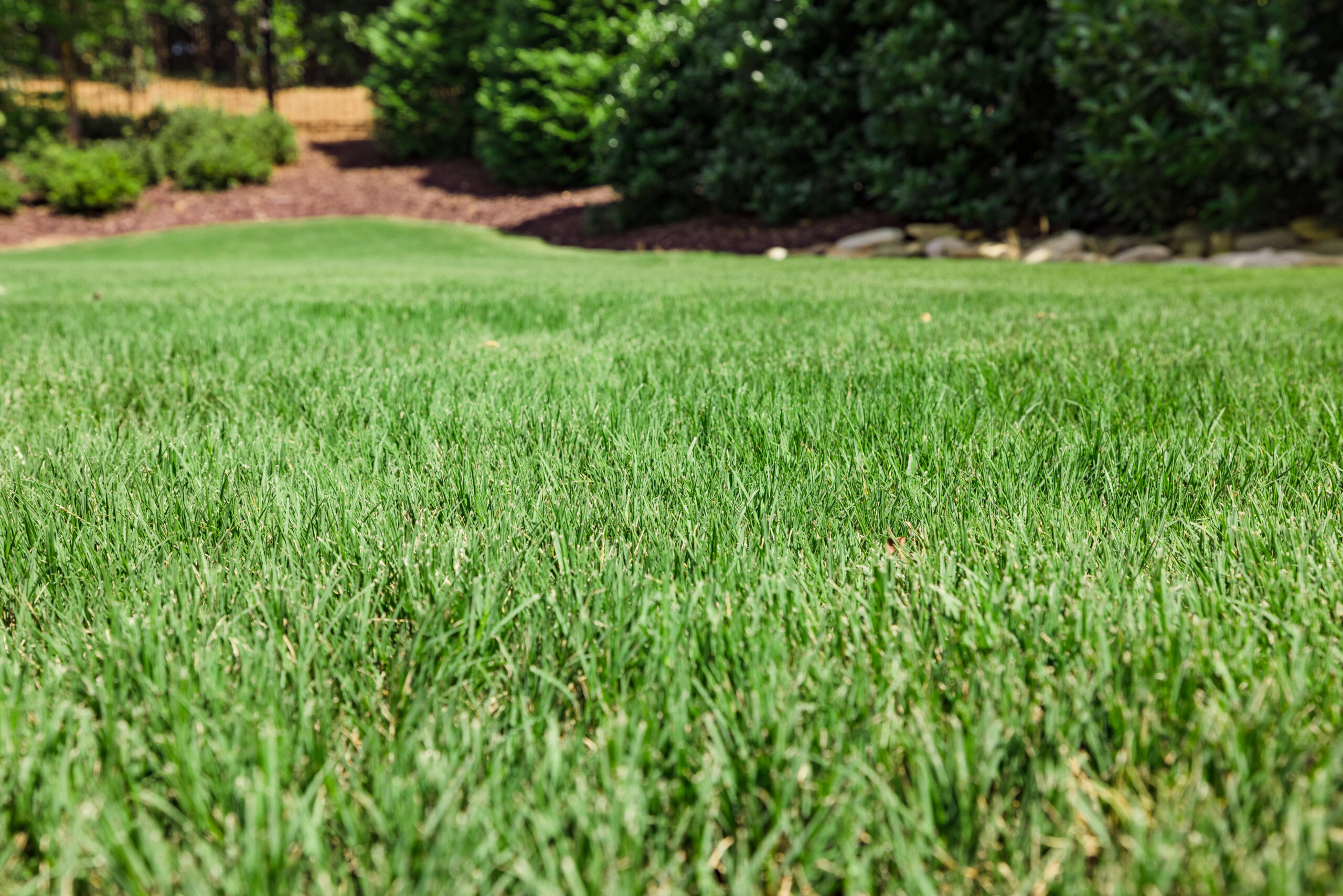Answering questions for clients is among our favorite tasks at Nature’s Turf. Whether clients have environmental, mechanical, or biological stresses in their lawns, getting to the bottom of the cause and offering information and solutions are key to the success of our landscapes. You may be surprised to find out that well-managed turf has a relatively small number of stressors, most of which are predictable like shade, drought, or mower stress. Fearful it may be disease, we also regularly get asked about spots created by animal urine. Let’s chat about why they happen, what recovery looks like, and strategies for avoiding them.
Why Do The Spots Happen To Begin With?
Whether they show up next to the sidewalk from neighbors walking their dogs, or just off the back patio where your dog hit grass first thing in the morning, urine spots can seem to pop up out of nowhere. If you’ve never seen them before, their bright coloration and quick development time can be concerning.
The cause of urine spots is a high concentration of nitrates. While contents vary from species to species, and individual dog to the next, the cause is consistent. It only takes a single instance for these spots to occur. In brief, when a dog urinates in a location, it makes its way into the soil around the roots of our grass plants. This creates a major difference in the concentration of nitrates outside of the roots compared to inside. Since molecules tend to move from high to low concentrations, they force their way into the roots resulting in serious injury/death to the afflicted plants, and create an exceptionally bright yellow coloration. In most cases, there will also be dark green grass right around the yellow spot. As you get farther away from the center of the spot, concentrations are reduced to the point where they no longer create damage, but instead create darker color and a surge of growth.
What Can I Do To Make These Spots Go Away?
It’s natural to want to get rid of urine spots as quickly as possible just like any other unwanted marr in an otherwise beautiful lawn. While there aren’t any interventions that quickly encourage recovery, we have the great fortune of growing turfgrasses that grow horizontally as well as vertically. During the growing season, small inclusions like urine spots can be covered or recovered quickly simply by the regrowth of any remaining tissues that didn’t succumb completely to injury, or growth sideways from the outside of the spots. If your dog has a favorite spot, repeated injury may mean that area doesn’t recover, but we can sometimes use those habits to our advantage.
How Can I Stop These Spots From Forming?
There are a couple of strategies to employ, both of which involve trying to avoid the creation of these spots altogether. One of the most common suggested strategies is to train your dog to use one specific spot in a landscape bed or mulched corner to do their business. Depending on the age and species of the dog, this is probably easier said than done, but is a tried and true method since they can’t create spots in the turf if they don’t do their business there.
It’s also not uncommon to put a sign or two in your yard near the street or sidewalk asking that dog owners not allow their dog to relieve themselves in your yard while on a walk. They may not even be aware that it causes such injury, and a simple ask may help avoid unnecessary frustration.
Important Takeaways:
- Whether they show up next to the sidewalk from neighbors walking their dogs, or just off the back patio where your dog hit grass first thing in the morning, urine spots can seem to pop up out of nowhere.
- The cause of urine spots is a high concentration of nitrates. While contents vary from species to species, and individual dog to the next, the cause is consistent.
- There aren’t any interventions that quickly encourage recovery, but we have the great fortune of growing turfgrasses that grow horizontally as well as vertically. With good care, bermuda and zoysia can grow over these spots quickly.
- There are a couple of strategies to employ, both of which involve trying to avoid the creation of these spots altogether.
- One of the most common suggested strategies is to train your dog to use one specific spot in a landscape bed or mulched corner to do their business.
- Put a sign or two in your yard near the street or sidewalk asking that dog owners not allow their dog to relieve themselves in your yard while on a walk.








